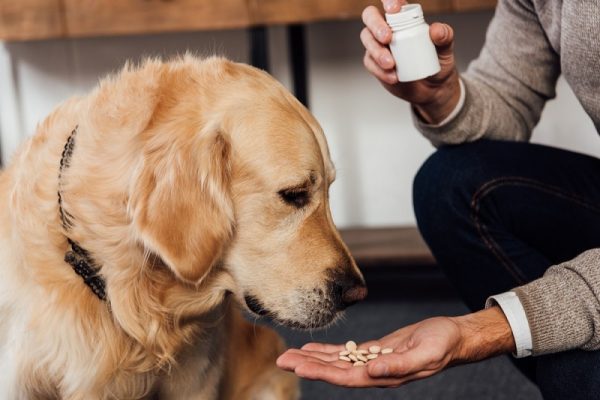If you are breeding your dog for the first time, you may have some questions about the breeding process. Fortunately, dogs usually know what they need to do.
How long will it take for dogs to mate? Once the actual act of mating occurs, it only takes 10 to 60 minutes. If you’re breeding for the first time, however, you may need to spend some time introducing the dogs and encouraging the mating process.
Did you know that you can speak with a real vet online about your dog’s health?
The 3 Steps of the Dog Mating Process
1. The Courtship
A female who wants to mate will display her sexual desire by urinating frequently and roaming to find a desirable male. The dogs will become playful and active with each other, and the male might nuzzle her neck and ears and sniff her vulva.
If she finds the male suitable, she will position herself and move her tail to the side. She is letting him know it is okay to mount her.

2. Initiation
After mounting the female successfully, the male will secure the female and begin pelvic thrusts. Once the penis is in the vagina, the copulatory tie joins the dogs together. The male will then stop thrusting and ejaculate. After the tie, the dogs will separate, and the sperm will remain in the female dog.
3. The Copulatory Tie
Mating dogs can remain stuck together for as little as 5 minutes to up to 30 minutes. It depends on the breed and the dog. If the stud gets panicked, the anxiety will cause the tie to take longer. If he remains calm, it will be over quickly.
In rare instances, mating dogs can stay tied together for up to an hour. Most ties last 10 to 20 minutes with the average being 13 to 14 minutes. In order for the dogs to separate, the bulbus glandis must return to its normal size. This will occur after the male releases his sperm in the female dog.
The tie can be painful for female virgins and inexperienced males. If it is the first or second time for a male, it can be painful. The new experience, bulb swelling, may cause anxiety for the dog. His penis will be too big to come out, and he will feel pain.
It is important to note that you should never try to separate dogs in a mating tie. Doing so will cause pain to both the male and female.

Breeding Responsibly
Responsible breeders love what they do. It can be both challenging and exciting and requires total devotion. If you want to breed purebreds, be prepared to spend time and money and dedicate yourself to improving the breed, not just breeding because you have “cute” intact dogs.
Also, consider if you want to contribute to overpopulation. Many shelters are overrun, especially after COVID-19, and unwanted dogs may be euthanized. Mixed breeds may be popular with pet owners, but most are not recognized by the AKC.
Consider how you will market the puppies and how you will find good homes for them. Breeders and shelters have screening processes, which take more resources. Unfortunately, many puppies and young dogs end up in shelters because owners enjoy the novelty of a puppy, but don’t want it when they move, have a baby, when the puppy gets bigger, or when problems arise like chewing or failed housetraining.
You also have to pay for veterinary care, health screenings, and other expenses to ensure the health of the parents and puppies. With some breeds, genetic testing is necessary to safeguard against congenital conditions that can affect the puppy’s health.
If you choose not to breed, it’s best to get your dog spayed or neutered. Thousands of dogs are in need of adoption, and there are plenty of breeders (both reputable and not). All service dogs are fixed as well.


Final Thoughts
Dog breeding can be as simple as “nature taking its course,” or it can be an expensive and involved process. Once the male and female dogs are prepared, the actual mating process can happen quickly. Be sure to consider if you’re ready for the time, effort, and expense of breeding or choose to spay or neuter your dog to prevent unwanted litters.
See Also:
Featured Image Credit: Sigma_S, Shutterstock






















4 Responses
Hi, was wondering if dogs need to lock for the female to become pregnant.
Hi Clive. Great question—and it's a common one. No, dogs do not need to “tie” or “lock” (the technical term is a "copulatory tie") for the female to become pregnant. While the tie increases the chances of successful fertilization because it helps retain sperm inside the female, pregnancy can still occur without it if ejaculation happens. I hope this helps. 🙂
Everything in this article is what my dogs have been doing except for the actual mounting. The male makes some weak attempts to mount, but never seems to know what to do. This has been going on for nearly 2 weeks; she is willing he is excited, but no completion of the mission.
Hi George. Thank you for sharing your experience! Age could be an important factor here. Younger dogs often need more time and experience to figure out the mating process, which can lead to the kind of hesitation you’re describing.
If both your dogs seem interested but unsure, you can try gently physically guiding them.
Hope this helps!